
Self-made Ribbon Controller - unique electric musical instrument
日本語版はこちら
I (Yuichi Onoue) would like to introduce you my self-made ribbon controller which I built in around 2000 and have played since then.
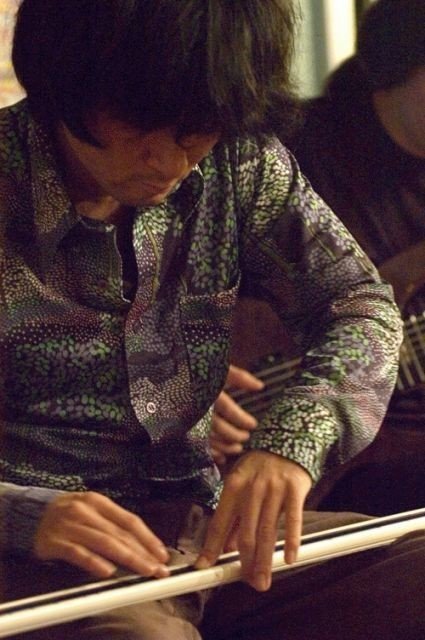
What is Ribbon Controller?
The ribbon controller is an electronic musical instrument that can be played with a smooth pitch change according to the location where the finger is pressed. It is equipped with a contact-type ribbon-shaped position sensor on a rod-shaped body, and the frequency of the oscillator is controlled by the position where it is pressed by finger. It can perform pitch slide performance like Theremin, and at the same time, it can produce the target pitch instantly like a keyboard. Historically, it seems that it first appeared as an alternative to the keyboard of the Moog synthesizer in the 1960s. Then it was installed in Yamaha's electronic organ YC-30 in 1970, and further installed in some synthesizer models of each company. Currently, Kurzwell, Doepher, and Eowave have long ribbon size products, and KORG has a small size one called "Monotron".
Since the outline of this musical instrument was described, I would like to talk about my own self-made ribbon controller and its application to music. At first, I would like to introduce you my original number called “Soft Rime” composed with this instrument.
* More examples of ribbon controller performances in various music formats will be introduced later.
Beginning of my ribbon controller
The prototype of my ribbon controller was about 10cm short length ribbon controller that was made and introduced by my friend Shigenori Kanazawa in 1998 (it electrically functions as a variable resistor). It was confirmed that the pitch could be controlled nicely when connected to a simple IC oscillator. After that, the length was increased to 20cm, 30cm...... and it settled down to 60cm at good for melodic performance. Since around 2002, when the production was settled down, as of 2019, I have continued to perform this 60cm length ribbon controller together with the oscillator.
I'm interested in music such as folk music, which uses a lot of vibrato and pitch slide technique in the melody, while I'm also interested in synthesizers that can create their own timbre and electronic music that uses them a lot. I am also interested in pop and rock music incorporating these elements. As a musical instrument to express these elements in my own way, I have found and played the ribbon controller. Generally speaking, it is not a musical instrument that has a well-established playing method. So I think each person has a different way to play it. In my case, I have settled down to play on the knee as shown in the video above. So let's take a look at the contents of my ribbon controller.
The body of my ribbon controller

The body of this ribbon controller uses wiremold conduit which is sold at DIY shops. This is a plastic stick that keeps wires for wiring in offices etc. It consists of a channel (concave) base and its cover. Following these two photos are the wiremold conduit before processing.
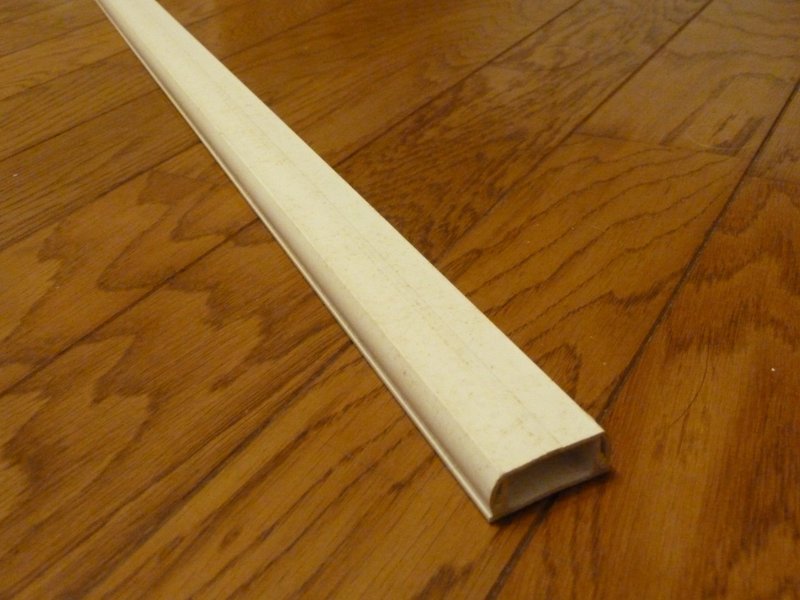
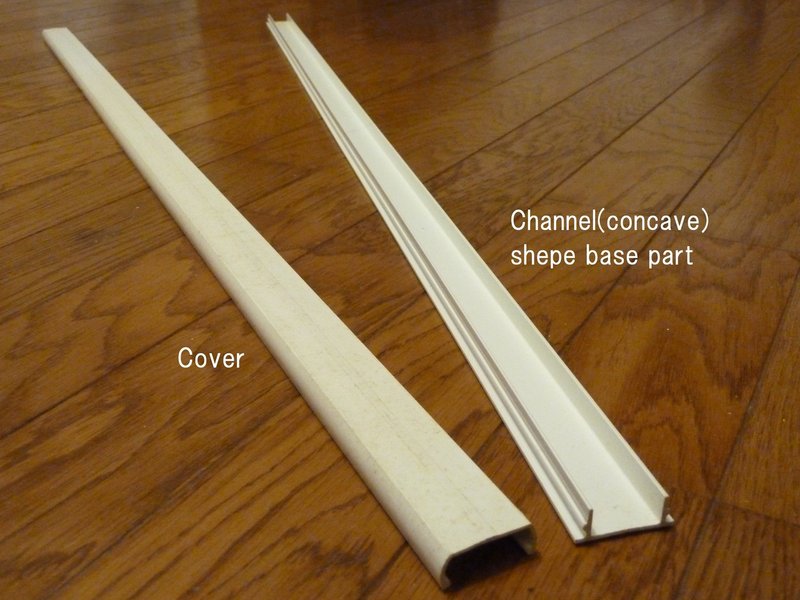
The cover side of this wiremold conduit is processed into a 60cm x 2cm long rectangular window so that the ribbon part (which described later) will be exposed. Inside of the channel (concave), square wood material is put into the concave part, and the upper side of the square wood material is pasted thin stainless steel sheet. The height of the square wood material and the stainless steel sheet must be slightly less than the concave part (about 1mm).
From the top, cover, base, and ribbon part.
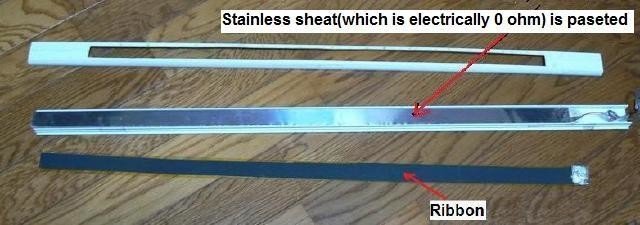
The base(channel) part is filled with wood square material whitch is pasted stainless steel sheets.
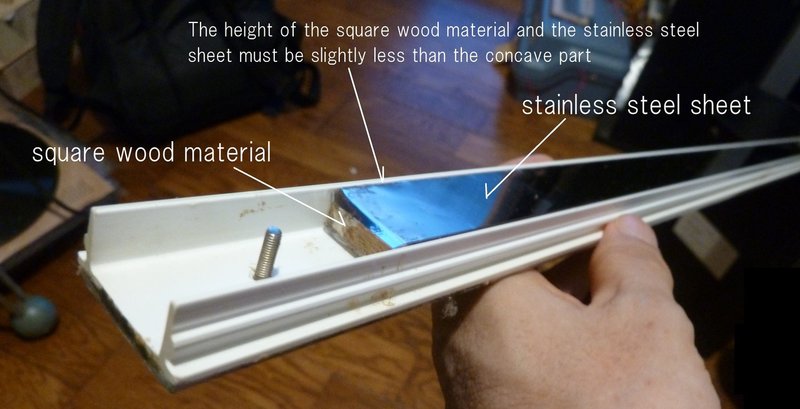
Putting the ribbon part on concave base part, it looks like this ↓

That is, a clearance between the ribbon and the stainless steel sheet is 1mm or less.
Ribbon part(electric resistor position sensor)
The ribbon part is based a 0.4mm vinyl chloride sheet cut into a ribbon shape, and a conductive rubber sheet cut into a ribbon shape is pasted to it with a thin double-sided adhesive tape. The conductive rubber sheet is made from what is called a conductive rubber bag (aka ESD bag, a storage bag that protects electronic components from static electricity), and I cut a ESD bag into a spiral to obtain 60cm ribbon shaped sheet. Because of conductivity, this ribbon sheet has an electrical resistance (about several hundred kΩ at the both edge of the ribbon).
conductive rubber bag (ESD bag)

Cutting this bag spirally into a 60cm long ribbon-shaped conductive sheet.
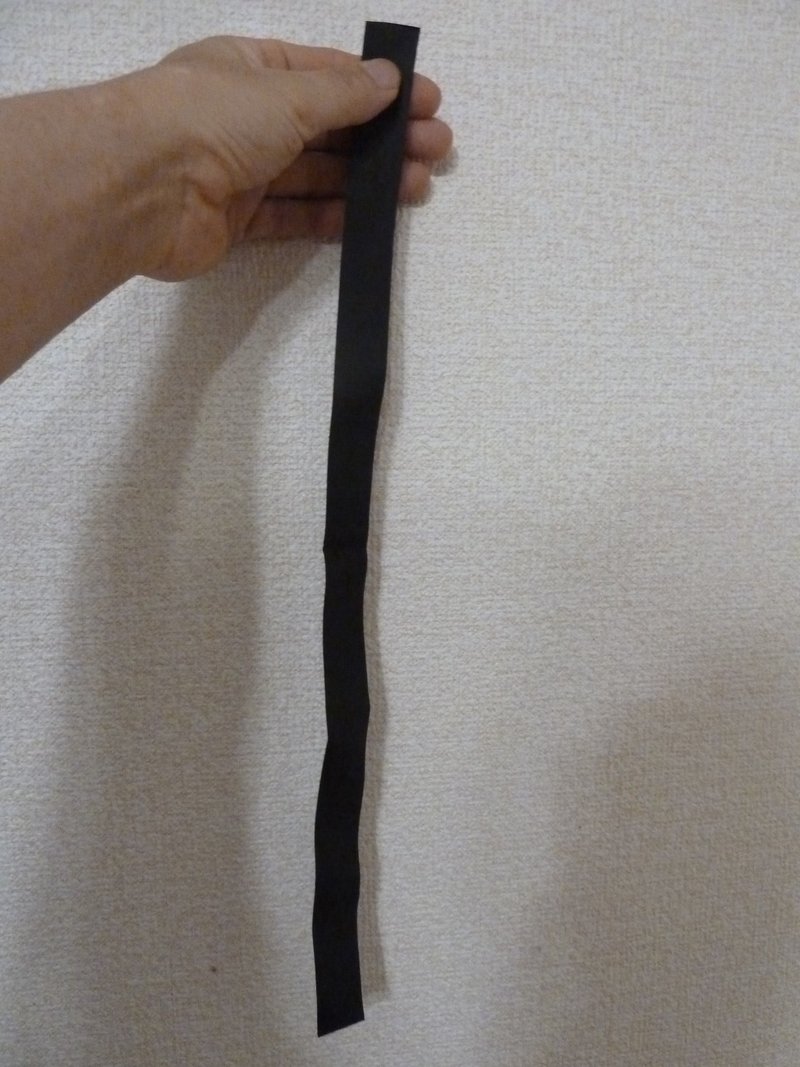
This ribbon-shaped conductive sheet is attached to a 0.4 mm thick vinyl chloride sheet with thin double-sided adhesive tape.

Install the ribbon part into body
Put the ribbon part on the channel (concave) as described above, and attach the cover. If left as it is, the ribbon and stainless steel sheet are in a non-contact state because of a clearance of less than 1mm, but if you press the ribbon part of anywhere with your finger, the ribbon will come into contact with the stainless steel sheet.
At this time, assuming that one end of the ribbon is the terminal 1 and one end of the stainless steel sheet is the terminal 2, an electric resistance that varies depending on the place where the ribbon is pressed is obtained. When the place to be pressed is farther to the terminal, the resistance is high, and when it is close to the terminal, the resistance is low. In other words, this ribbon controller works electrically as variable resistance (volume).
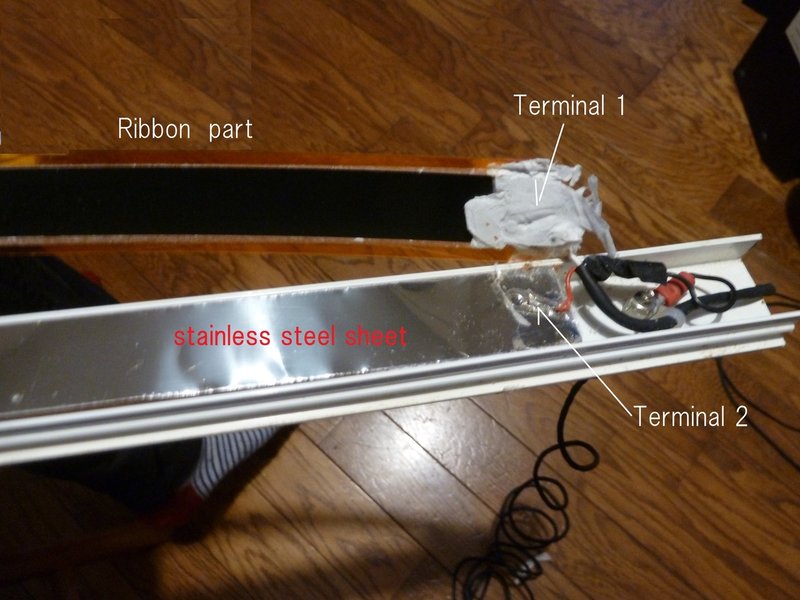
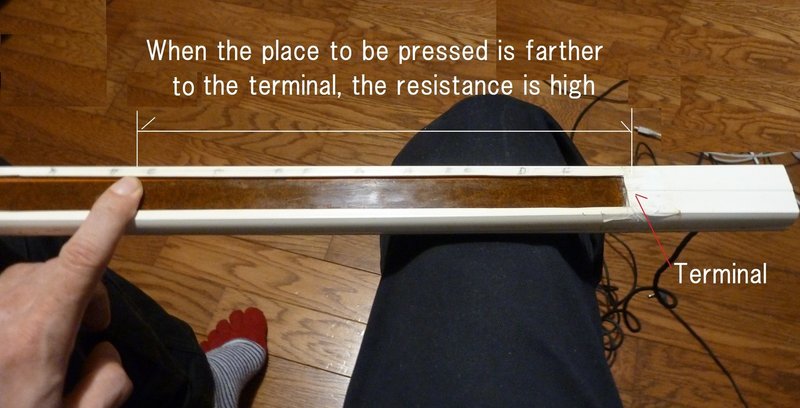
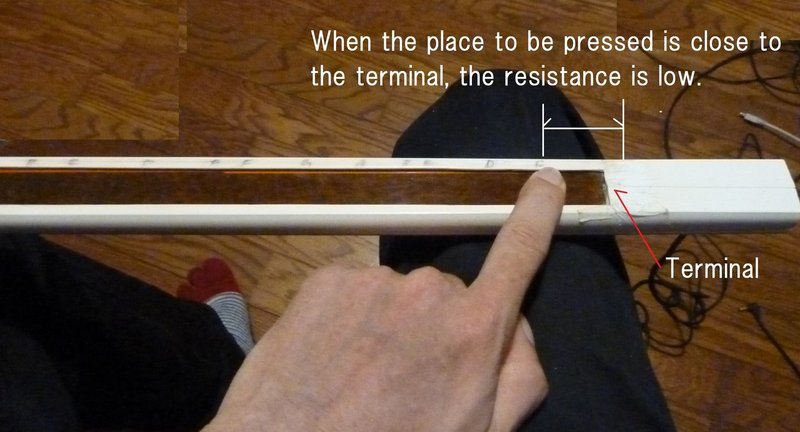
Oscillator part
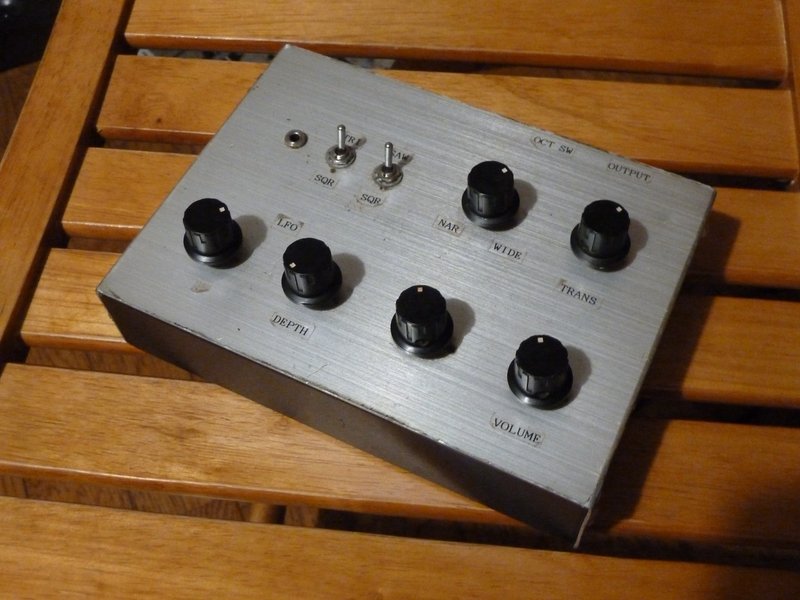
The oscillator part is a simple analog IC oscillator that can vary the oscillation frequency with electrical resistance. Specifically, a 555 type timer IC is used for the oscillator part, and a variable resistance(ribbon controller) is connected between the 6th and 7th pins to change the oscillation frequency. When the resistance value of the ribbon controller is low, the pitch of the oscillator is high. Conversely, when the resistance value is high, the pitch of the oscillator is low. Note that the intervals of pitch change are wider as the pitch is lower and narrower as the pitch is higher. I want the interval to be constant regardless of the pitch, but this is not possible with a resistance-controlled oscillator. So I consider it as "same as a guitar or violin" and continue to use this. In the future, I would like to solve this problem with an Oct / V voltage control type oscillator.
A pulse wave is output from the 3rd pin of 555 type IC. By inputting it into a 4024 type binary counter IC which obtains 1 to 6 octave lower signals. A wide pitch range is obtained by switching these octave signals with the rotary switch and the foot switch. An FET electronic switch is used to control the foot switch. In the final stage, there is a switching circuit between a rectangular wave and a (pseudo) sawtooth wave.
The ribbon controller itself has a pitch range of about two and a half octaves, but in this circuit, it can be switched by a switch for another six octaves, so the sound range will be quite wide. I usually switch octave up/down during the performance with the foot switch, and the rotary switch is used to determine the pitch range according to the song. However, I sometimes change the rotary switch quickly and randomly during performance as tricky techniques.
The output of this oscillator is a simple rectangular wave or pseudo-sawtooth wave, which alone is a sound like an arcade game around 80's or a PSG tone generator existed in the mid 80's. It also has a built-in LFO that can generate a triangular wave and a rectangular wave, which is input to the 5th pin of the 555 oscillator for pitch modulation. (the LFO section is omitted in the circuit diagram below).
Circuit diagram
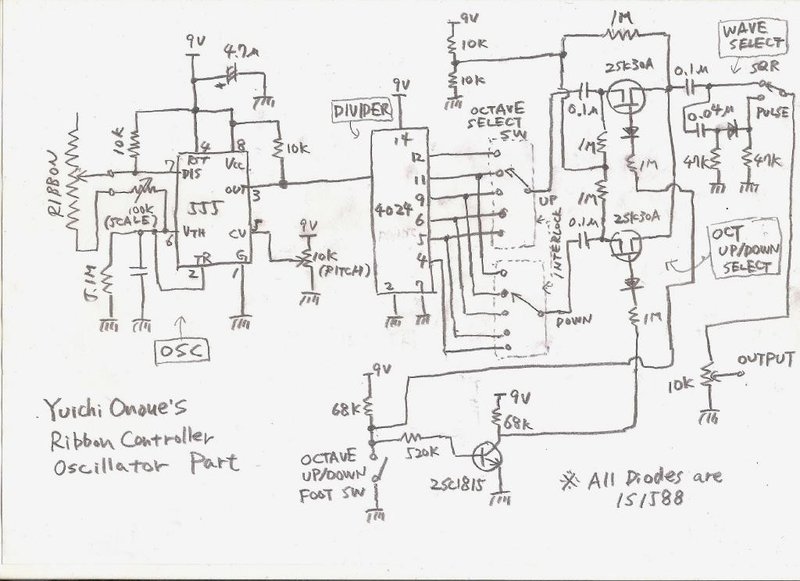
Inside of tone generator
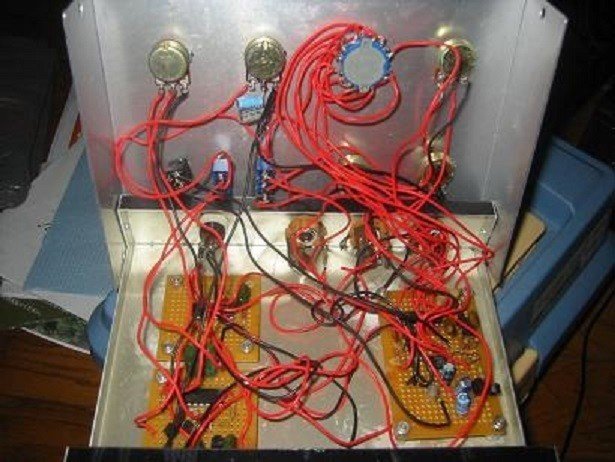
Using SoftPot for ribbon sensor

In recent years, a position sensor called SoftPot (electrically, a variable resistor) is relatively easy to obtain on the Internet electric parts shop. The length ranges from as short as 10cm to as long as 50cm and 70cm for long ribbon controller applications. I purchased and tried it, and the pitch of the place where I pressed it was very accurate, and I got a good response where the pressure hardly affected the pitch. When using my self-made ribbon position sensor described before, the pressing pressure has a considerable influence on the pitch. I originally thought that I didn't want the pressure to affect the pitch. So I felt that this was good news, but when I tried it for a while, I realized “instability”, “drunkenness feel”, and “easy to apply vibrato” of the pitch due to the influence of the pressure. And they are essential to my music style. I became to know that by using SoftPot. In future, I'm thinking about using my original ribbon sensor and Softpot depending on musical purposes. For example, SoftPot is better for funky playing styles that use a lot of short notes. However, basically I continue to use my original ribbon sensor with unstable elements, in line with my original music style.
Effect Processor
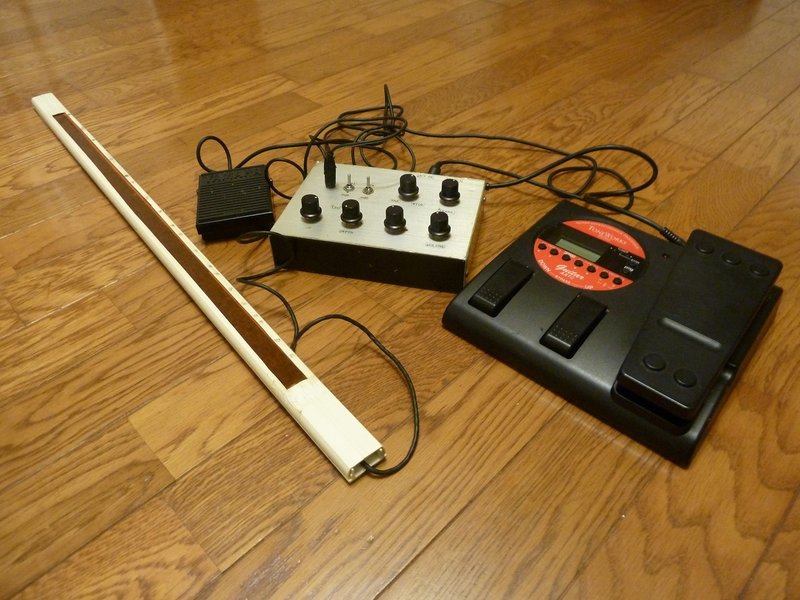
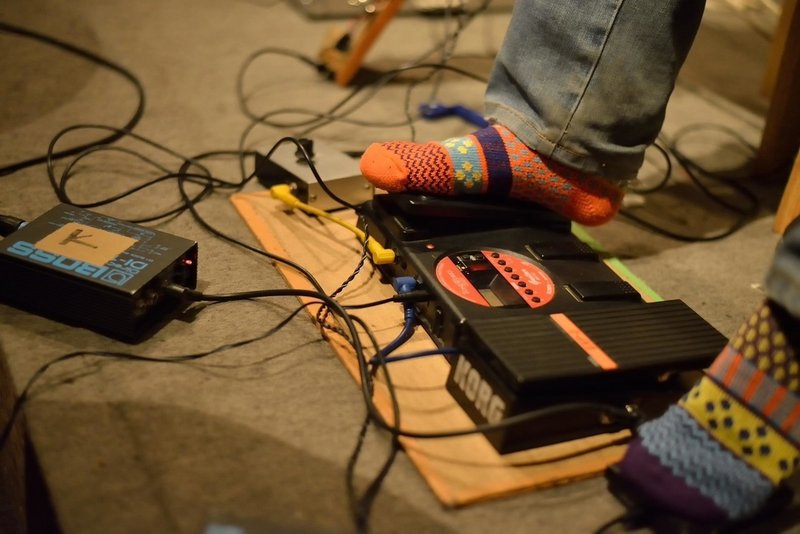
I mentioned that it is a simple electronic sound if it is only an oscillator (but it is a tasteful sound, too) in the previous section , but this is processed into various deep sounds with the KORG AX1G multi-effect processor. This model includes not only distortion, compressor, EQ, delay, reverb as well as conventional ones, but also has very unique effects like 'DRONE' that produces a resonance string effect, 'VOICE' that produces an uttering effect, 'FILTER' that produces an analog synthtic sound and so on. For me, this AX1G is very important thing that can be said to be part of an instrument rather than effect processor. By the way, I am also a developer (in charge of DSP programming and sound creation) of AX1G (released in 1998).
Applications
I would like to introduce you various applications of my ribbon controller in various musical forms so far. As I described on "Effect Processor" , Please pay attention to various tones, too.
First of all, Wannabani-en - The experimental instrumental combo who includes my handmade instruments + two bass guitars + drum. Here is prog rock, mass rock-like approach original tune written by Kumada(drummer of this band) called "Taru(樽を見ていた)".
Next, with Yukie Sato(g, vo) and Koichiro Yamamoto (perc). Yukie is rock/folk musician who is active in both Korea and Japan. The song is very famous Korean folk-rock song "Beautiful River Mountain" (original is here). Great singing and majestic and psychedelic Ribbon controller performance! Live at Busan, Korea.
Next, a suspicious and hard prog-rockin' performance by the bassist Kengo Sakamoto of Kouenji Hyakkei , the drummer Junzo Tateiwa who is a member of Pochakaite Malko , Ghost etc, and myself. So we are three prog brothers. The song is famous Japanese female singer Harumi Miyako's hit song in middle 1960s, "Ara Mitetanone(アラ見てたのね)".
Next is an original song "Floating Clouds(浮雲)" by Sanpin, a self-made musical instrument duo includes me and Yuzo Hisada who is a self-made percussion player. Pay attention to the floating parallel 5th tone of a ribbon controller.
This is also a performance with Yuzo Hisada, and the song is a traditional Turkish song “Rumeli Karsilama”. It plays the special 9/8 time signature, which is a characteristic of the music in this area, and is aggressive in both timbre and performance. Is this new interpretation of traditional songs unique to ribbon controllers?
It is a performance of the Wannabani-en again, and this is an old and famous Taiwanese song “Rice Ball Vendor(焼肉粽)” (Telesa Teng's Version in 1971 is here). A funky performance with a ribbon controller coming over the two bass guitars and drum rhythm section. It was introduced by Taiwanese media as “"前衛搖滾 焼肉粽(Progressive rock version of Rice Ball Vendor)".
This is the trio named Ugabani - Hiro Ugaya on bass, Tadashi Kumada on drum, and me. A tapping bass guitar inspired by the sequence pattern of Tangerine Dream, and a high-tension drum is explode. Mysterious, trippy, danceable, and dramatic 15-minute sound scape.
Here is my one man band project. Virtual duo of Korg Kaoss Pad2 & Ribbon Controller. Rhythm & Synth arpeggio part are generated by KP2. By the way, I am main sound designer of Kaoss Pad 2(KP2) as well. It was in 2002.
Lastly, Trio of Yukie Sato(g, vo), Koichiro Yamamoto(perc) and me again. The song is Yukie's original song “Alcohol Disinfection Blues(酒消毒ブルース)”. It available a robot voiced comical ribbon controller sound. My ribbon controller even genarate with this kind of tone.
※More Ribbon Controller playlist is here
Ribbon Controller Summit
Here I would like to introduce Ribbon Controller Summit, the group was formed in 2019 and consists of three self-made ribbon controller-type instrument players including myself. The members are TAO by HAL Motohashi, Posenbo by Kei Yamamoto, and me.
TAO has one course position sensor and 4 pressure sensitive switches which change pitch range and tone. Its tone generator is using REAKTOR(Software modular synth). Posenbo has two courses position sensor and it outs MIDI note and pitch bend data. It is connected to X50 PCM synthesizer.
It is interesting that there are different interpretations on each instruments even they all use position sensor for picking out the pitch. The video clip below shows an original song "Obi(帯)" inspired by Japanese Gagaku, Noh, and contemporary and bizarre music.
Conclusion
As I wrote at the beginning, my friend Shigenori Kanazawa brought his own ribbon controller in 1998, and based on that, I have improved and played with various trials and errors. As of 2019, more than 20 years have passed. In addition to the videos I introduced, I played with various people in various styles, and I was able to leave many works for sound source production many can be listened on the musical distribution service. See here. I would like express my gratitude to everyone involved. On the other hand, even after 20 years, there is still room for improvement at both playing and making, and I want more to create music by playing with this instrument. I would also like to make new work, such as making the voltage controlled oscillator instead of resistance control. I would describe again when new developments and results come out. In addition, there are people other than me who have tried their own ribbon controller in various ways, and I would like you to check by searching Google using keywords such as "ribbon controller" and "DIY".
LINK
What is Ribbon Controller(Sweet water)
Kaisatsuko - Electric original wheel rubbed stringed instrument
Yuichi Onoue's Torigoya Sound
Yuichi Onoue on Youtube
Yuichi Onoue on Facebook
この記事が気に入ったらサポートをしてみませんか?
